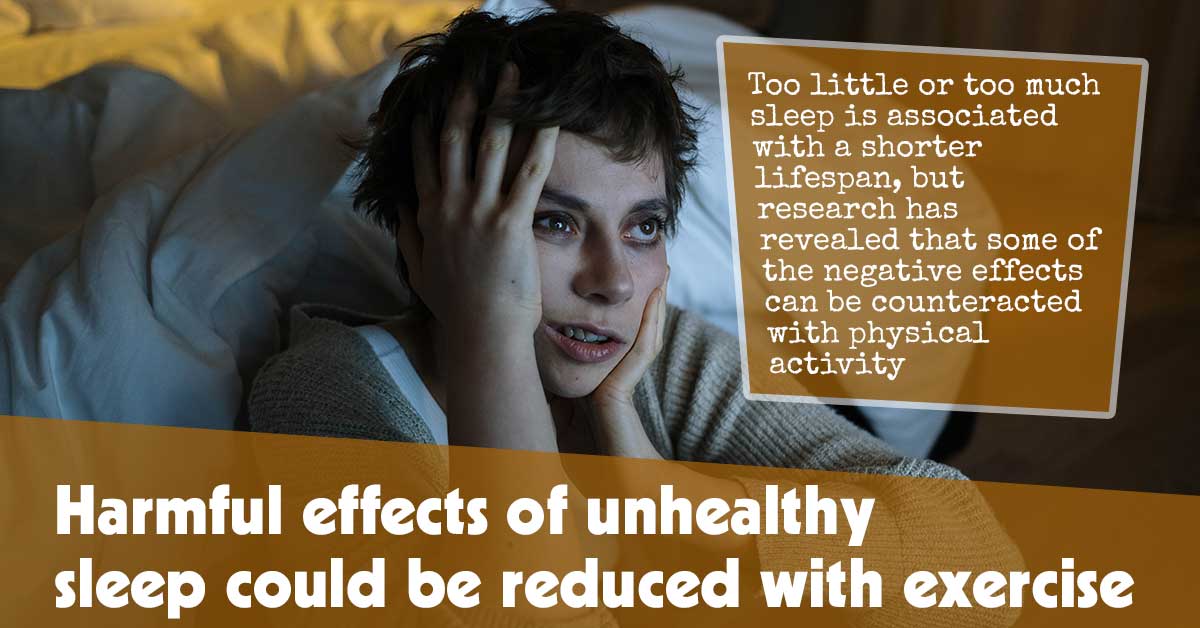Too little or too much sleep is associated with a shorter lifespan, but research involving over 90,000 adults has revealed that some of the negative effects can be counteracted with physical activity. The study showed an increase in levels of physical activity diluted the mortality risks linked to insufficient or excessive sleep.1✅ JOURNAL REFERENCE
DOI: 10.1093/eurjpc/zwad060
Adequate exercise as well as healthy sleep help to prolong life expectancy. The physical activity interaction with sleep duration for promoting health has however not been clear.
The primary limitation of earlier research was the use of subjective self-reported sleep and physical activity which might not be accurate. In comparison, an accelerometer device measures movement and thus provides objective and more reliable sleep duration and activity estimates.
This study examined the combined effects of sleep duration and physical activity on the risk of death by making use of accelerometry. The study comprised 92,221 individuals between the ages of 40 and 73 years old wearing an accelerometer wristband for 1 week.
Nightly sleep duration of less than 6 hours was categorized as short, 6 to 8 hours as normal, or more than 8 hours as long. Total physical activity volume was divided into low, intermediate, and high tertiles. Physical activity of moderate to vigorous intensity was categorized according to WHO guidelines.
Death registries provided mortality data. The main outcome was death from all causes. The secondary outcomes were death as a result of cancer or cardiovascular disease.
The participant’s average age was 62 years old and just over half of them were women. During an average follow-up of 7 years, 3,080 individuals died, 1,871 died from cancer, and 1,074 died from cardiovascular disease.
The influence that physical activity had on sleep’s impact on mortality was examined. The volume of activity was first looked at then physical activity intensity.
Factors were adjusted for that could influence the association such as sex, age, ethnicity, education level, deprivation, sleep measurement season, shift work, diet, BMI, alcohol consumption, and smoking.
In participants with low activity levels, short and long sleep was linked to 16% and 37% increased risks of death from all causes, respectively.
Only short sleep was harmful In individuals with intermediate exercise levels, with a 41% increased chance of death from all causes. Sleep duration wasn’t associated with the risk of death in individuals with high exercise levels.
Short sleepers with low exercise levels had a 69% increase in cardiovascular death risk, which was canceled out when exercise was increased to moderate or high levels. Long sleepers with low exercise levels had a 21% increase in cancer death risk which was canceled out with moderate or high exercise levels.
Similar outcomes were observed for physical activity of moderate to vigorous intensity., Short and long sleep was linked to 31% and 20% increased risks of death from all causes in individuals who did not meet the WHO recommendations.
These risks were canceled out in individuals following the WHO guidelines. Short sleepers not achieving the intensity of exercise recommendations had a 52% increase in cardiovascular death risk, which was canceled out in individuals meeting the recommendations.
Long sleepers not achieving the recommendations had a 21% increase in cancer death risk which was canceled out in individuals following the WHO recommendations.
The results indicate that efforts promoting health that target both sleep duration and physical activity could be more effective for the prevention or delay of middle-aged and older individuals dying prematurely compared to focusing on just a single behavior.
Individuals always getting healthy amounts of physical activity as well as sleep would be an ideal scenario. This study however indicates that getting enough exercise could partially offset the harmful impact of too little or too much sleep.



